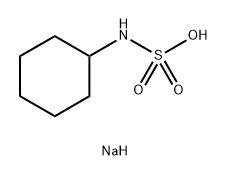Acacia , Select exquisite grade, pale yellow , 9000-01-5
Synonym(s):
Acacia gum
CAS NO.:9000-01-5
Empirical Formula: N/A
Molecular Weight:
MDL number: MFCD00081264
EINECS: 232-519-5
| Pack Size | Price | Stock | Quantity |
| 500G | RMB71.20 | In Stock |
|
| 2.5KG | RMB287.20 | In Stock |
|
| others | Enquire |
PRODUCT Properties
| Density | 1.35 |
| FEMA | 2001 | ACACIA GUM (ACACIA SENEGAL (L.) WILLD.) |
| storage temp. | Sealed in dry,Room Temperature |
| solubility | water: soluble |
| form | fine powder |
| color | White to yellow-beige |
| Specific Gravity | 1.35-1.49 |
| PH Range | 4.1 - 4.8 |
| Odor | ylsh.-wh. angular fragments, odorless |
| Odor Type | Bland |
| biological source | plant (Acacia) |
| Water Solubility | Water soluble. Aqueous solution is acidic to litmus. |
| Merck | 14,14 |
| Stability: | Stable. Incompatible with alcohols, oxidizing agents. |
| CAS DataBase Reference | 9000-01-5 |
| EPA Substance Registry System | Gum arabic (9000-01-5) |
Description and Uses
Acacia gum is an odourless white to yellow-white powder. It is soluble in water and incompatible with alcohol and oxidising agents and precipitates. It gels on addition of solutions of ferric salts, borax, lead subacetate, alcohol, sodium silicate, gelatin, and ammoniated tincture of guaiac. It is non-toxic and non-hazardous. It is a water-soluble gum from several species of the acacia tree, especially Acacia senegal and A. arabica, and used in the manufacture of adhesives and ink and as a binding medium for marbling colours. Gum arabic is also known as gum acacia and is a natural gum made of hardened sap taken from two species of the Acacia tree – Acacia senegal and Acacia seyal. Gum arabic is a natural product of the Acacia senegal tree, occurring as an exudate from the trunks and branches. It is used primarily in the food industry as a stabiliser but has had more varied uses. It is normally collected by hand when dried, when it resembles a hard, amber-like resin normally referred to as ‘tears’. Gum arabic is widely used in the food industry as an emulsifier, thickener, and flavouring and thickening agent. It is employed as a soothing agent in inflammatory conditions of the respiratory, digestive, and urinary tracts and is useful in diarrhoea and dysentery. It exerts a soothing influence upon all the surfaces with which it comes in contact. Gum acacia is an ingredient of all the official Trochisci and various syrups, pastes, and pastilles or jujubes. During the time of the gum harvest, the Moors of the desert are said to live almost entirely on it, and it has been proved that 6 oz. is sufficient to support an adult for 24 h. Gum acacia is highly nutritious, is a mixture of saccharides and glycoproteins, and provides the properties of a glue and binder suitable for human edibility. In many cases of disease, it is considered that a solution of gum arabic may for a time constitute the exclusive drink and food of the patient. Gum arabic reduces the surface tension of liquids, which leads to increased fizzing in carbonated drinks.
As mucilage, excipient for tablets, size, emulsifier, thickener, also in candy, other foods; as colloidal stabilizer. In the manufacture of spray-dried "fixed" flavorsstable, powdered flavors used in packaged dry-mix products (puddings, desserts, cake mixes) where flavor stability and long shelf life are important.
Safety
| Symbol(GHS) |  GHS07 |
| Hazard statements | H315-H319-H335 |
| Precautionary statements | P261-P280a-P304+P340-P305+P351+P338-P405-P501a |
| Hazard Codes | Xi |
| Risk Statements | 36-36/37/38 |
| Safety Statements | 26-36/37/39-27 |
| WGK Germany | 2 |
| RTECS | CE5945000 |
| TSCA | Yes |
| HS Code | 13012000 |
| Hazardous Substances Data | 9000-01-5(Hazardous Substances Data) |
| Toxicity | LD50 orl-rat: >16 g/kg FDRLI* 124,-,76 |


